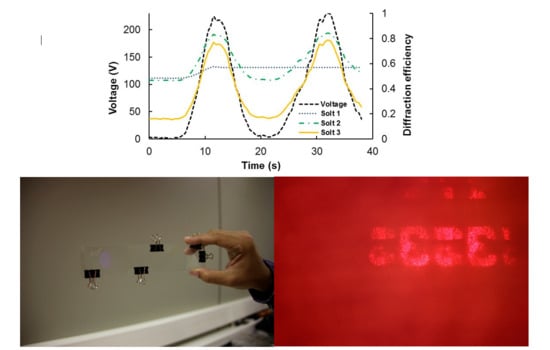Tunable Waveguides Couplers Based on HPDLC for See-Through Applications
Abstract
1. Introduction
2. Materials and Methods
3. Results and Discussion
4. Conclusions
Author Contributions
Funding
Institutional Review Board Statement
Informed Consent Statement
Data Availability Statement
Conflicts of Interest
References
- Martinez, C.; Krotov, V.; Meynard, B.; Fowler, D. See-through holographic retinal projection display concept. Optica 2018, 5, 1200–1209. [Google Scholar] [CrossRef]
- Mukawa, H.; Akutsu, K.; Sugiura, M.; Hashimoto, S. 4.2: Novel Virtual Image Optics for Reflective Microdisplays (Optics). In Proceedings of the 20th International Display Research Conference, Palm Beach, FL, USA, 25–28 September 2000. [Google Scholar]
- Amitai, Y. P-27: A two-dimensional aperture expander for ultra-compact, high-performance head-worn displays. SID Symp. Dig. Tech. Pap. 2005, 36, 360–363. [Google Scholar] [CrossRef]
- Shen, Z.; Weng, Y.; Zhang, Y.; Wang, C.; Liu, A.; Li, X. Holographic Recording Performance of Acrylate-Based Photopolymer under Different Preparation Conditions for Waveguide Display. Polymers 2021, 13, 936. [Google Scholar] [CrossRef]
- Guo, J.; Tu, Y.; Yang, L.; Wang, L.; Wang, B. Design of a multiplexing grating for color holographic waveguide. Opt. Eng. 2015, 54, 125105. [Google Scholar] [CrossRef]
- Zhang, N.; Liu, J.; Han, J.; Li, X.; Yang, F.; Wang, X.; Hu, B.; Wang, Y. Improved holographic waveguide display system. Appl. Opt. 2015, 54, 3645–3649. [Google Scholar] [CrossRef]
- Neipp, C.; Francés, J.; Martínez, F.J.; Fernández, R.; Alvarez, M.L.; Bleda, S.; Ortuño, M.; Gallego, S. Optimization of Photopolymer Materials for the Fabrication of a Holographic Waveguide. Polymers 2017, 9, 395. [Google Scholar] [CrossRef] [PubMed]
- Fernández, R.; Bleda, S.; Gallego, S.; Neipp, C.; Márquez, A.; Tomita, Y.; Pascual, I.; Beléndez, A. Holographic waveguides in photopolymers. Opt. Express 2019, 27, 827–840. [Google Scholar] [CrossRef] [PubMed]
- Bruder, F.-K.; Fäcke, T.; Rölle, T. The Chemistry and Physics of Bayfol® HX Film Holographic Photopolymer. Polymers 2017, 9, 472. [Google Scholar] [CrossRef] [PubMed]
- Noiret, N.; Meyer, C.; Lougnot, D.J. Photopolymers for holographic recording: V. Self-processing systems with near infrared sensitivity. Pure Appl. Opt. J. Eur. Opt. Soc. Part A 1994, 3, 55–71. [Google Scholar] [CrossRef]
- Fan, F.; Liu, Y.; Hong, Y.; Zang, J.; Kang, G.; Zhao, T.; Tan, X.; Shimura, T. Volume polarization holographic recording in phenanthrenequinone doped poly(MMA-Co-BzMA) photopolymer. Chem. Lett. 2018, 47, 520–523. [Google Scholar] [CrossRef]
- Steckman, G.J.; Shelkovnikov, V.; Berezhnaya, V.; Gerasimova, T.; Solomatine, I.; Psaltis, D. Holographic recording in a photopolymer by optically induced detachment of chromophores. Opt. Lett. 2000, 25, 607–609. [Google Scholar] [CrossRef]
- Gallego, S.; Ortuño, M.; Neipp, C.; Márquez, A.; Beléndez, A.; Pascual, I.; Kelly, J.V.; Sheridan, J.T. 3 Dimensional analysis of holographic photopolymers based memories. Opt. Express 2005, 13, 3543–3557. [Google Scholar] [CrossRef] [PubMed]
- Vaia, R.A.; Dennis, C.L.; Natarajan, L.V.; Tondiglia, V.P.; Tomlin, D.W.; Bunning, T.J. One step, Micrometer-scale organization of nano- and mesoparticles using holographic photopolymerization: A generic technique. Adv. Mater. 2001, 13, 1570–1574. [Google Scholar] [CrossRef]
- Chen, J.; Bos, P.J.; Vithana, H.; Johnson, D.L. An electro-optically controlled liquid crystal diffraction grating. Appl. Phys. Lett. 1995, 67, 2588–2590. [Google Scholar] [CrossRef]
- Suzuki, N.; Tomita, Y.; Kojima, T. Holographic recording in TiO2 nanoparticle-dispersed methacrylate photopolymer films. Appl. Phys. Lett. 2002, 81, 4121–4123. [Google Scholar] [CrossRef]
- Tomita, Y.; Urano, H.; Fukamizu, T.; Kametani, Y.; Nishimura, N.; Odoi, K. Nanoparticle-polymer composite volume holographic gratings dispersed with ultrahigh-refractive-index hyperbranched polymer as organic nanoparticles. Opt. Lett. 2016, 41, 1281–1284. [Google Scholar] [CrossRef]
- Miki, M.; Ohira, R.; Tomita, Y. Optical properties of electrically tunable two-dimensional photonic lattice structures formed in a holographic polymer-dispersed liquid crystal film: Analysis and experiment. Materials 2014, 7, 3677–3698. [Google Scholar] [CrossRef] [PubMed]
- Bošnjaković, D.; Sebastián, N.; Drevenšek-Olenik, I. Magnetically Tunable Liquid Crystal-Based Optical Diffraction Gratings. Polymers 2020, 12, 2355. [Google Scholar] [CrossRef]
- Neipp, C.; Taleb, S.I.; Francés, J.; Fernández, R.; Puerto, D.; Calzado, E.M.; Gallego, S.; Beléndez, A. Analysis of the Imaging Characteristics of Holographic Waveguides Recorded in Photopolymers. Polymers 2020, 12, 1485. [Google Scholar] [CrossRef]
- Kogelnik, H. Coupled wave theory for thick hologram gratings. Bell Syst. Tech. J. 1969, 48, 2909–2947. [Google Scholar] [CrossRef]
- Gallego, S.; Ortuño, M.O.; Neipp, C.; Márquez, A.; Beléndez, A.; Pascual, I.; Kelly, J.V.; Sheridan, J.T. Physical and effective optical thickness of holographic diffraction gratings recorded in photopolymers. Opt. Express 2005, 13, 1939–1947. [Google Scholar] [CrossRef] [PubMed]
- Fernández, R.; Gallego, S.; Navarro-Fuster, V.; Neipp, C.; Francés, J.; Fenoll, S.; Pascual, I.; Beléndez, A. Dimensional changes in slanted diffraction gratings recorded in photopolymers. Opt. Mater. Express 2016, 6, 3455–3468. [Google Scholar] [CrossRef]
- Vojtíšek, P.; Květoň, M.; Richter, I. Complex method for angular-spectral analysis of volume phase diffraction gratings recorded in photopolymers. J. Eur. Opt. Soc. Rapid Publ. Europe 2016, 11, 16009. [Google Scholar] [CrossRef]
- Zhihui Diao, Z.; Kong, L.; Yan, J.; Guo, J.; Liu, X.; Xuan, L.; Yu, L. Electrically tunable holographic waveguide display based on holographic polymer dispersed liquid crystal grating. Chin. Opt. Lett. 2019, 17, 012301. [Google Scholar] [CrossRef]
- Fukuda, Y.; Tomita, Y. Spatial Frequency Responses of Anisotropic Refractive Index Gratings Formed in Holographic Polymer Dispersed Liquid Crystals. Materials 2016, 9, 188. [Google Scholar] [CrossRef]
- Fenoll, S.; Brocal, F.; Segura, J.D.; Ortuño, M.; Beléndez, A.; Pascual, I. Holographic Characteristics of Photopolymers Containing Different Mixtures of Nematic Liquid Crystals. Polymers 2019, 11, 325. [Google Scholar] [CrossRef]
- Peng, H.; Ni, M.; Bi, S.; Liao, Y.; Xie, X. Highly diffractive, reversibly fast responsive gratings formulated through holography. RSC Adv. 2014, 4, 4420–4426. [Google Scholar] [CrossRef]
- Kalkar, A.K.; Kunte, V.V. Electro-optical studies on polymer dispersed liquid crystal composite films. II. Composites of PVB/E44 and PMMABA/E44. Mol. Cryst. Liq. Cryst. 2002, 383, 1–25. [Google Scholar] [CrossRef]
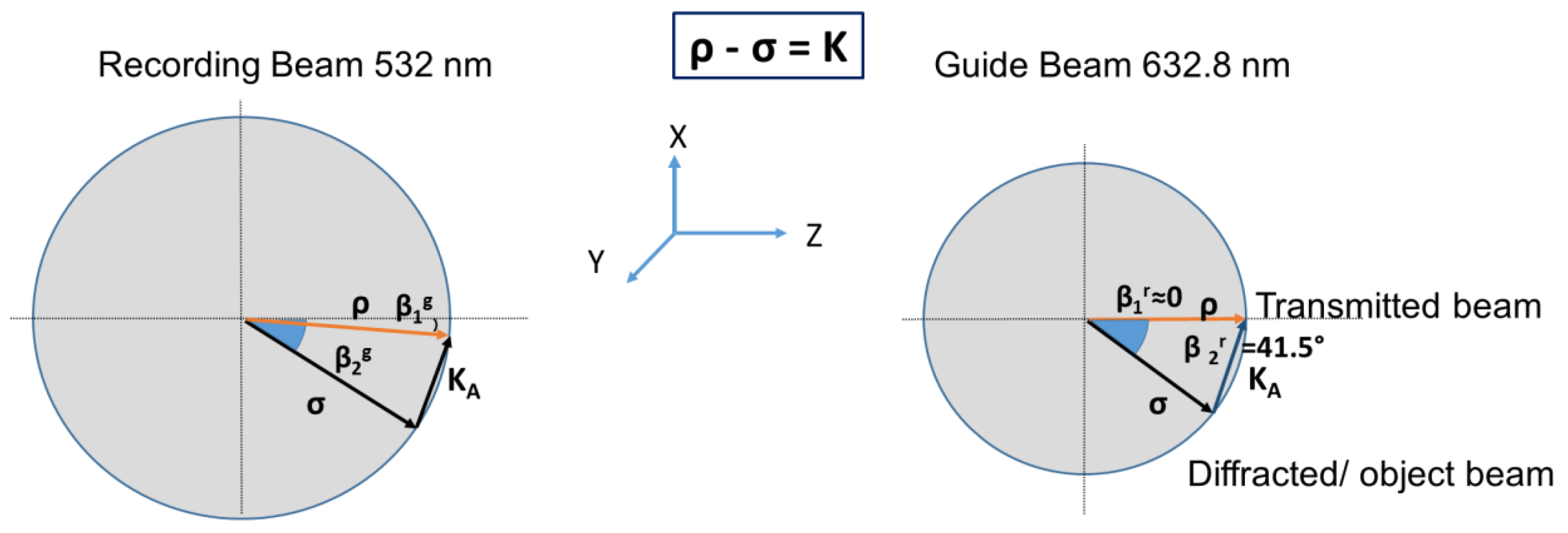
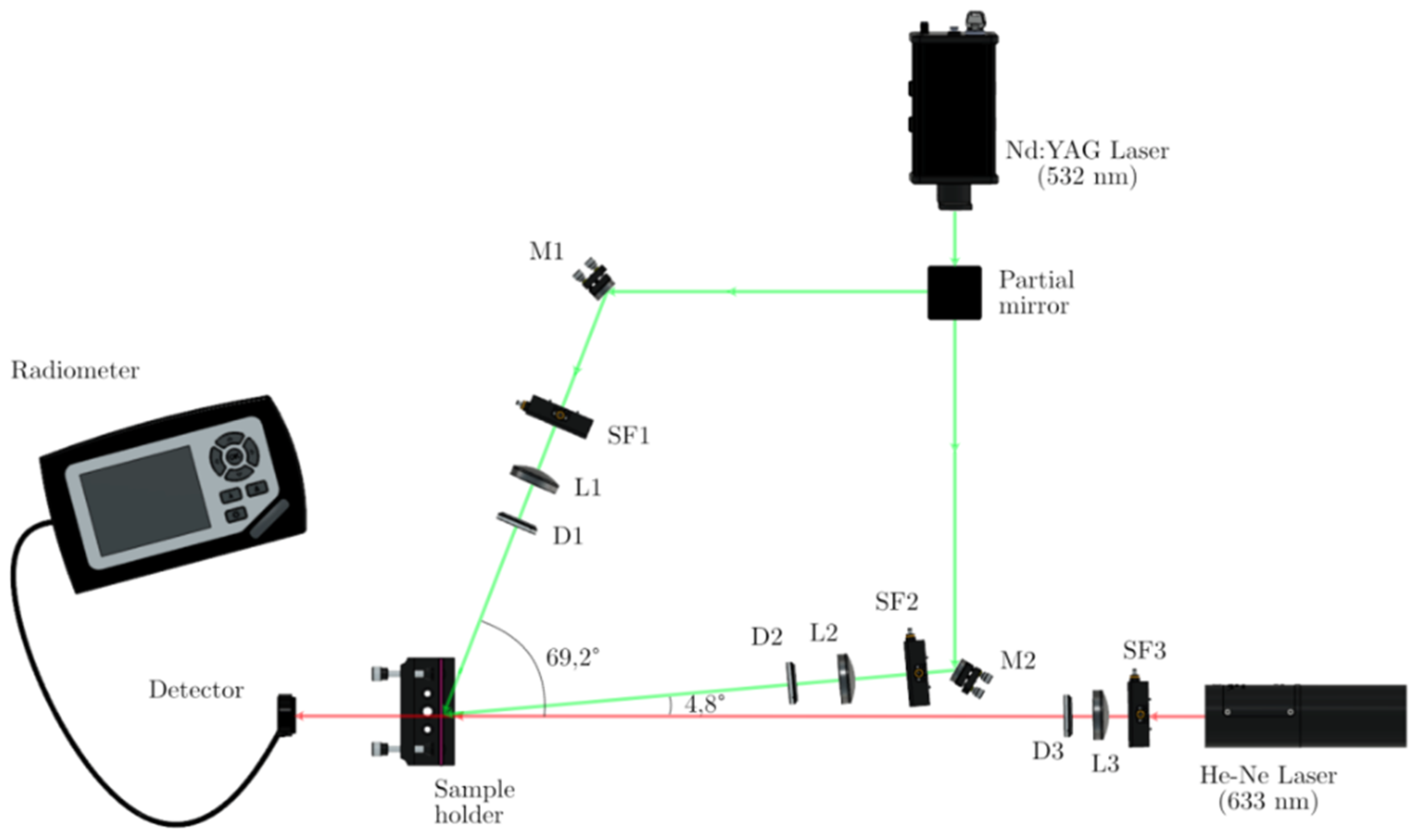

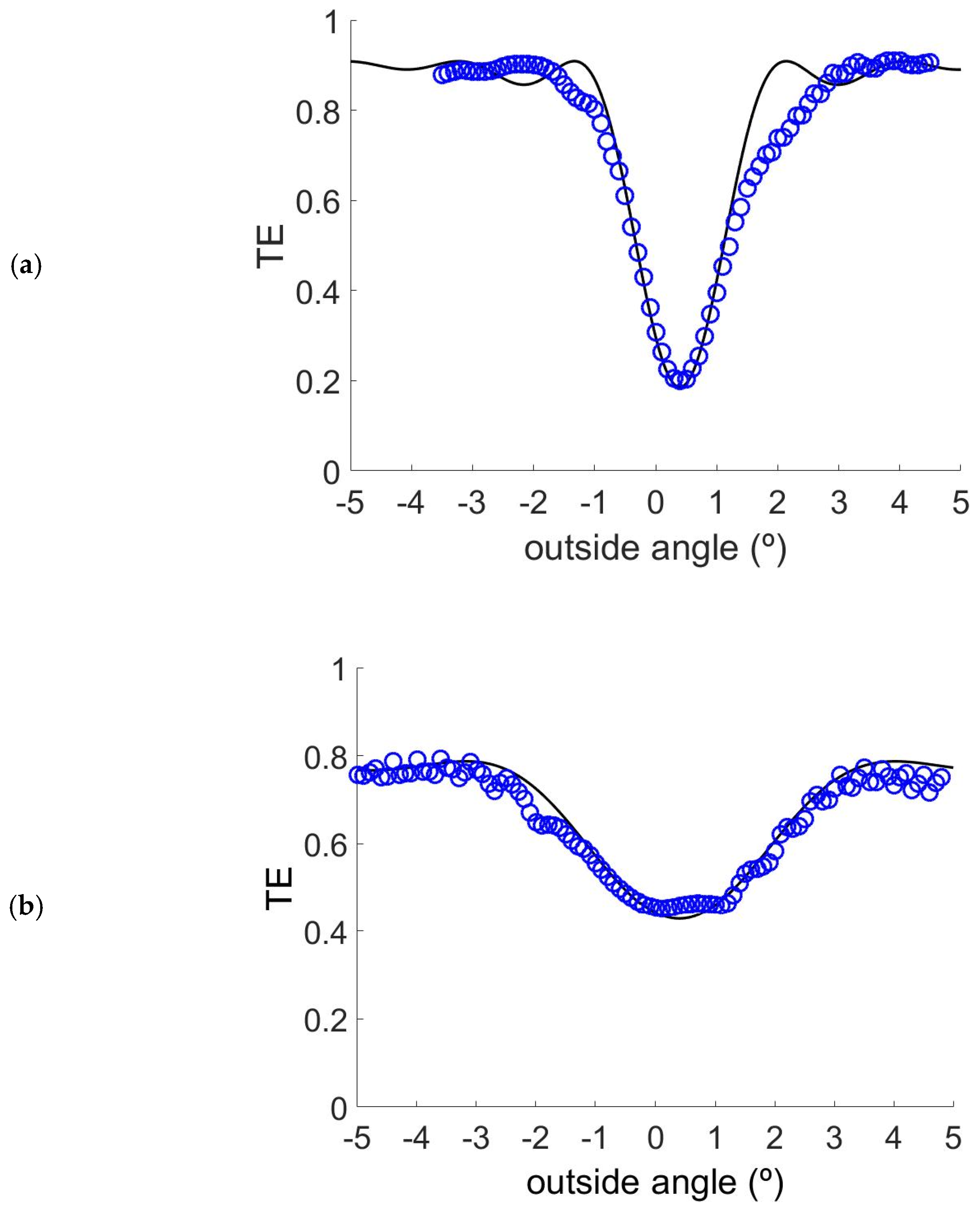
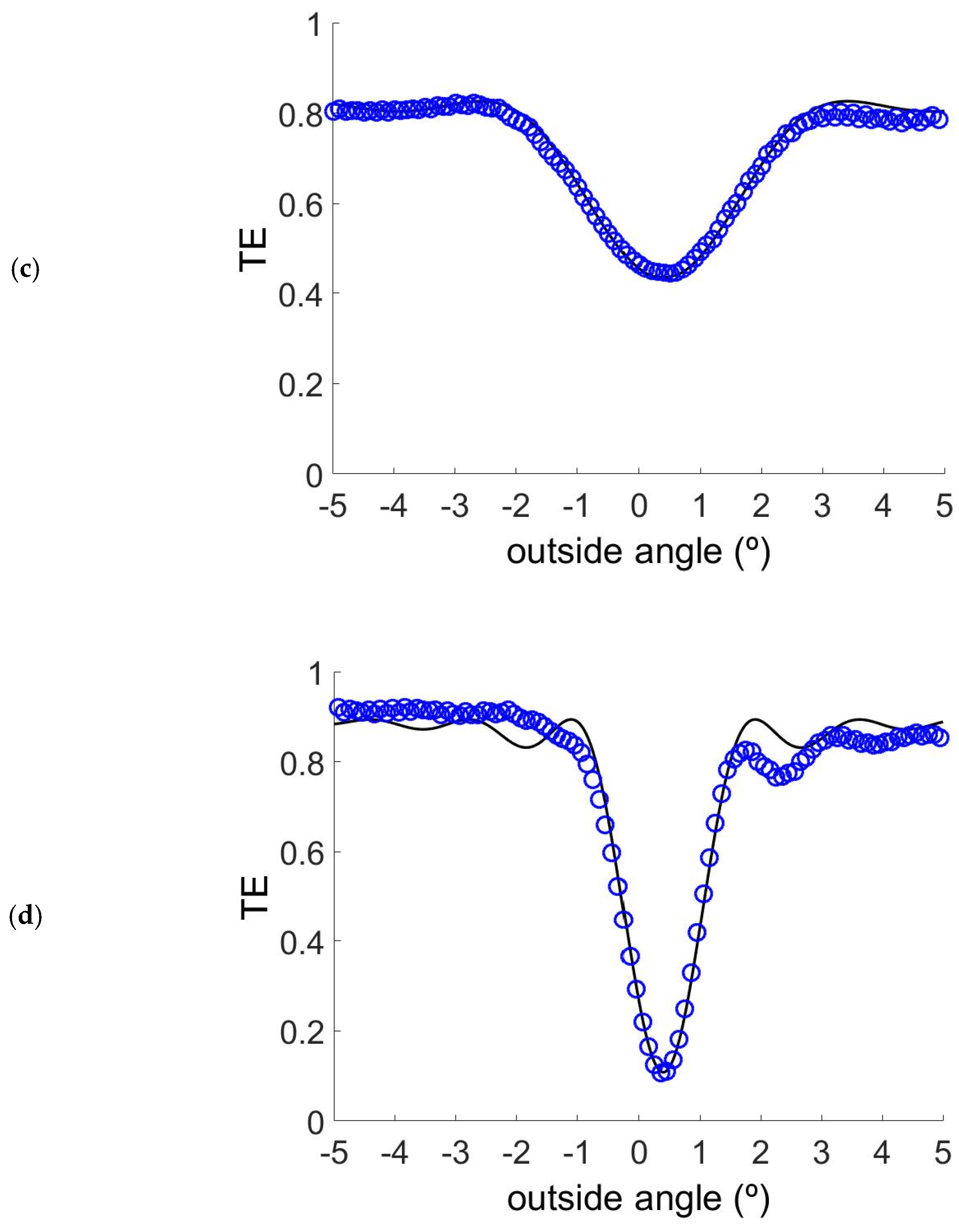
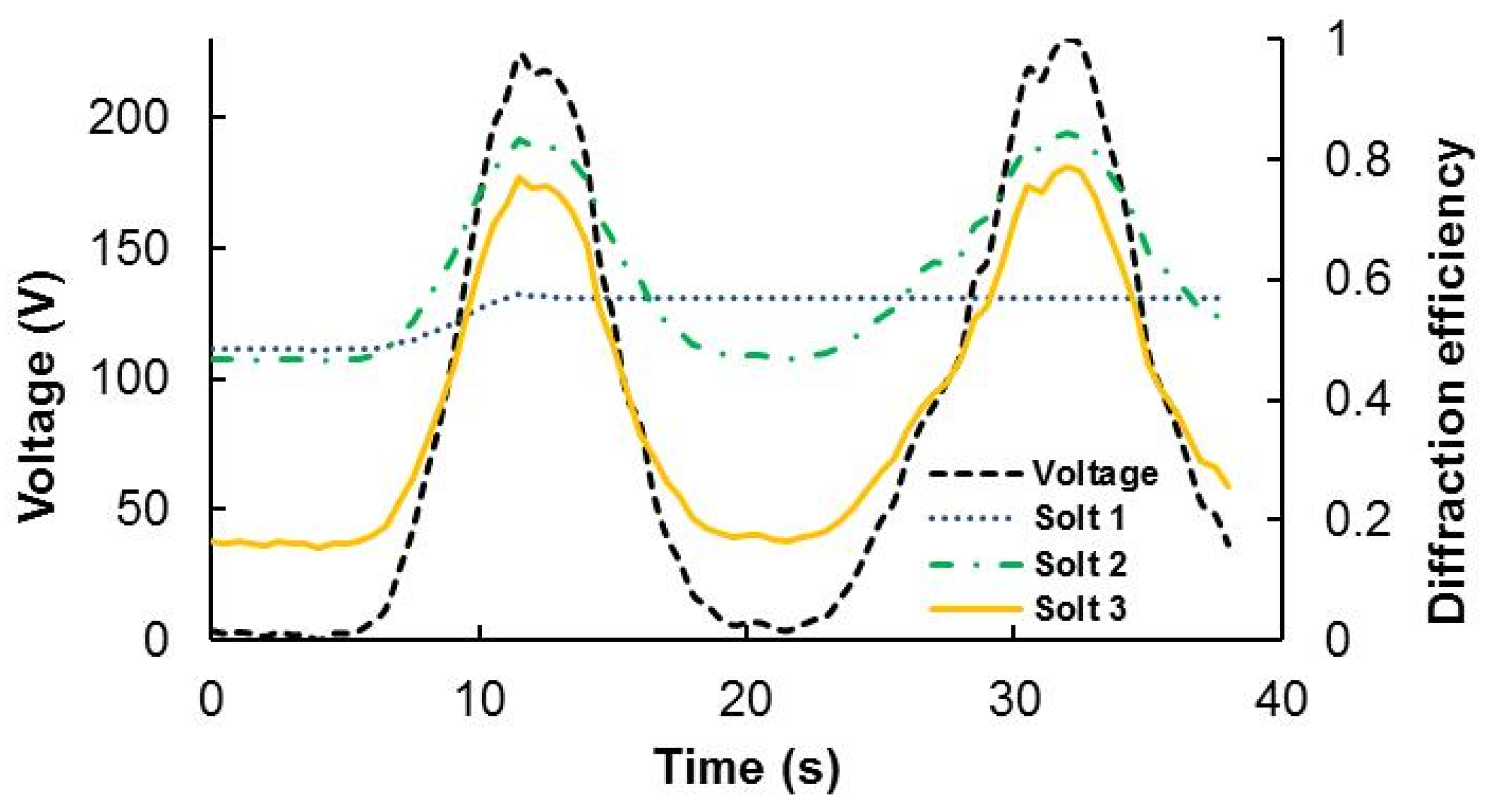
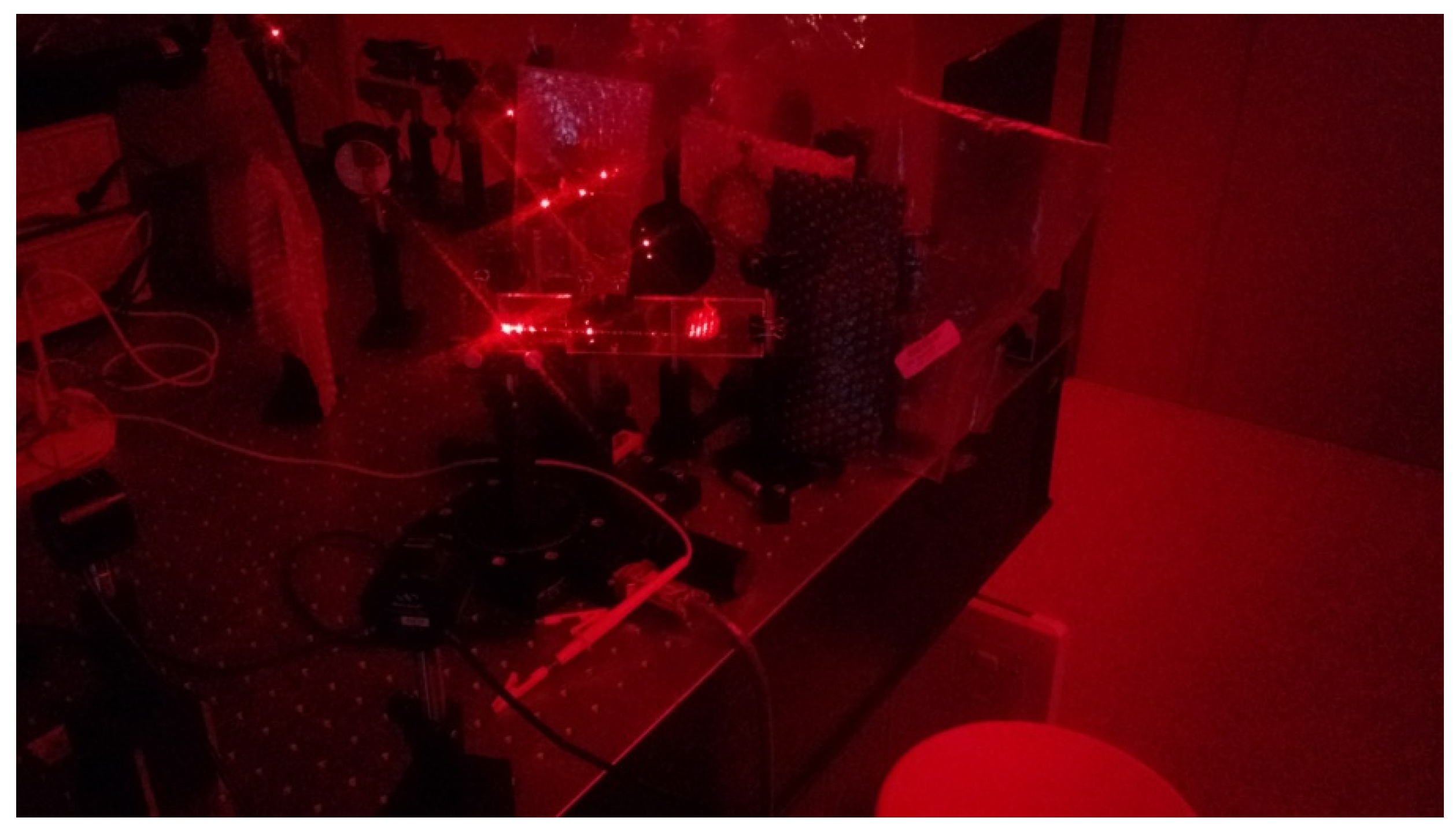
| Component | Solution 0 | Solution 1 | Solution 2 | Solution 3 |
|---|---|---|---|---|
| YEt (g) | 0.001 | 0.001 | 0.001 | 0.001 |
| NMP (μL) | 469 | 0 | 0 | 200 |
| NVP (μL) | 0 | 50 | 50 | 50 |
| OA (μL) | 144 | 300 | 400 | 300 |
| NPG (g) | 0.01 | 0.01 | 0.01 | 0.01 |
| LC036 (μL) | 450 | 750 | 750 | 750 |
| DPHPA (g) | 1.1 | 1.4 | 1.3 | 1.2 |
Publisher’s Note: MDPI stays neutral with regard to jurisdictional claims in published maps and institutional affiliations. |
© 2021 by the authors. Licensee MDPI, Basel, Switzerland. This article is an open access article distributed under the terms and conditions of the Creative Commons Attribution (CC BY) license (https://creativecommons.org/licenses/by/4.0/).
Share and Cite
Gallego, S.; Puerto, D.; Morales-Vidal, M.; Ramirez, M.G.; Taleb, S.I.; Hernández, A.; Ortuño, M.; Neipp, C. Tunable Waveguides Couplers Based on HPDLC for See-Through Applications. Polymers 2021, 13, 1858. https://doi.org/10.3390/polym13111858
Gallego S, Puerto D, Morales-Vidal M, Ramirez MG, Taleb SI, Hernández A, Ortuño M, Neipp C. Tunable Waveguides Couplers Based on HPDLC for See-Through Applications. Polymers. 2021; 13(11):1858. https://doi.org/10.3390/polym13111858
Chicago/Turabian StyleGallego, Sergi, Daniel Puerto, Marta Morales-Vidal, Manuel G. Ramirez, Soumia I. Taleb, Antonio Hernández, Manuel Ortuño, and Cristian Neipp. 2021. "Tunable Waveguides Couplers Based on HPDLC for See-Through Applications" Polymers 13, no. 11: 1858. https://doi.org/10.3390/polym13111858
APA StyleGallego, S., Puerto, D., Morales-Vidal, M., Ramirez, M. G., Taleb, S. I., Hernández, A., Ortuño, M., & Neipp, C. (2021). Tunable Waveguides Couplers Based on HPDLC for See-Through Applications. Polymers, 13(11), 1858. https://doi.org/10.3390/polym13111858











